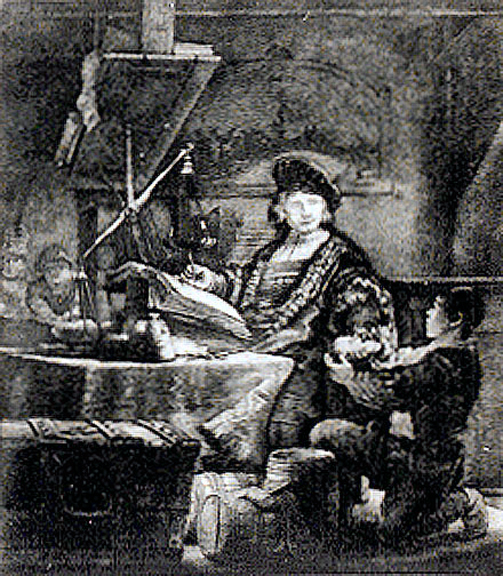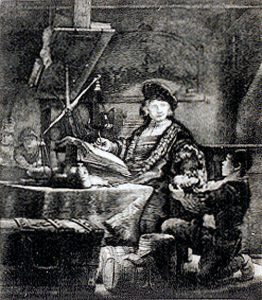Description
JAN UTENBOGAERT THE GOLD WEIGHER by Amand-Durand
MAKE AN OFFER
All reasonable offers will be considered
$600.00
JAN UTENBOGAERT THE GOLD WEIGHER by Amand-Durand is an engraving (after Rembrandt). The approximate image size is 10″ X 8″ (25 cm X 20 cm).
Amand-Durand was a noted engraver in his own right during the 19th century. He spent a substantial portion of his life re-creating the plates of all the engravings of Rembrandt. This is plate number B 281 as set forth in the book of Rembrandt’s engravings.
We have many different images of Rembrandt’s engravings by Amand-Durand and from the standpoint of aesthetic viewing, they are as nice as the best printing of Rembrandt whose first printing was not always his best as he often improved his plate after the first printing.
Contact us for further information and pictures of other images.
ABOUT THE ARTIST – (Click on picture to enlarge it)
Charles Amand-Durand (1831-1905) was an innovative and passionate engraver & artist who resurrected the fading copper & wood plates of various Old Masters from the 15th, 16th and 17th centuries, such as Rembrandt, Albrecht Drurer, Hans Sebald Beham and others. He admired their wood & copper plates, that he noted had faded, through the ravages of time & use, and were no longer producing quality impressions.
Amand-Durand comprehensively researched many public and private collections displaying the Old Masters’ engravings and realized that many of the images would eventually fade completely. He especially admired the works of Rembrandt and scrutinized his plates and techniques.
Rembrandt’s engravings were created in the 1600s, but by the mid 1800s the original plates were in a worn and defective condition. In order to form exact reproductions, he used as his guide, not the worn and flat original copper or wood plates, but the 1st & 2nd state prints of the original works. Durand dedicated a major part of his life to recreating in exact detail the engraved plates of Rembrandt & other old Masters.
Amand-Durand’s re-engravings became so well respected that major collectors & institutions throughout Europe sought to acquire them, including the French Bibliotheque Nationale and the Louvre Museum in Paris.
In 1895 Theo Van Gogh, brother and manager of Vincent Van Gogh stumbled across Amand-Durand’s work. He was so impressed that he sought the artist out. Afterward contacting Vincent to express his enthusiasm for his artistic talents and intellect. Van Gogh was one of the many that recognized Amand-Durand’s talents at the end of the 19th century and beyond.
In 1855, the Conservator of the Cabinet de Estampes, George Duplessis, was so appreciated of the genius of Durand that he had his work published in books by the Bibliotheque Nationale, France. Amand-Durand’s plates were used in an anthology of European engravings, from the 15th to 19th centuries. This publication was beautifully presented and made available at considerable cost to the wider public in 1870.



